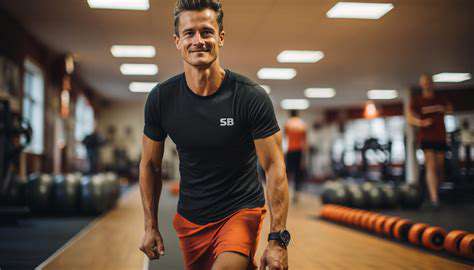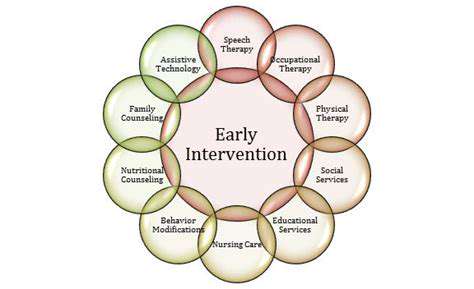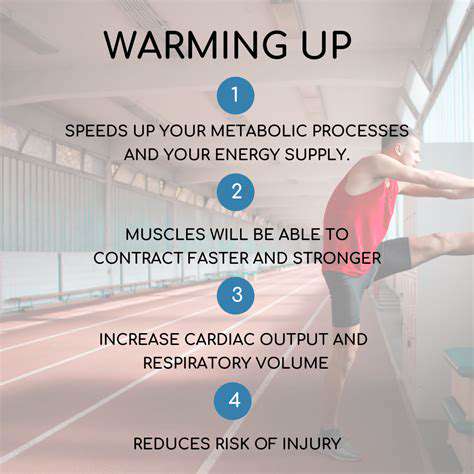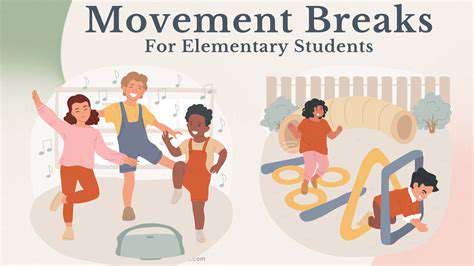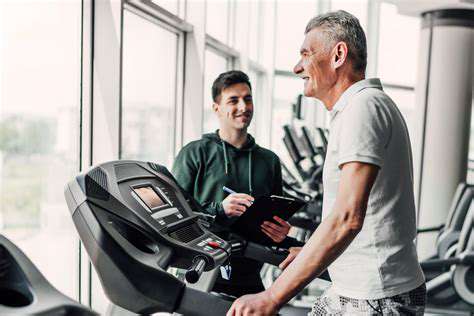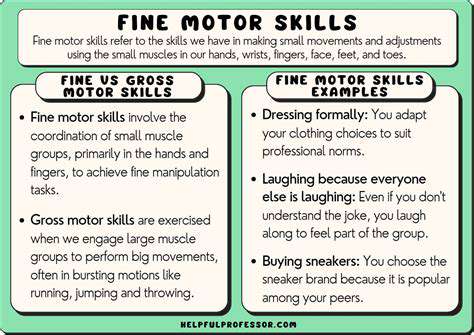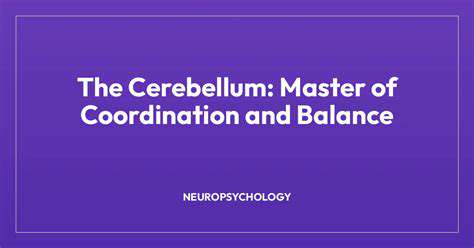The Role of Hand Eye Coordination in Athletic Performance
The Neural Pathways and Sensory Integration
Neural Pathways for Hand-Eye Coordination
The intricate dance of hand-eye coordination relies heavily on a complex network of neural pathways. Signals from the eyes, transmitting visual information about the target, travel through the optic nerve to the visual cortex in the brain. This initial processing translates the visual input into a spatial understanding of the object's location and movement. Simultaneously, proprioceptive sensors in muscles and joints provide feedback on the hand's position and movement, creating a continuous stream of data about the hand's current state. These signals converge in the cerebellum and motor cortex, areas responsible for coordinating and refining motor commands. The brain then interprets this combined sensory input to generate the appropriate motor commands, directing the hand to execute the desired action with precision.
These neural pathways are not static; they are constantly adapting and refining based on experience. With repeated practice and feedback, the brain strengthens the connections between sensory and motor pathways, leading to smoother, more efficient movements. This plasticity allows for the development of increasingly sophisticated hand-eye coordination skills, enabling us to perform tasks ranging from grasping a small object to hitting a baseball with accuracy.
Sensory Integration in Hand-Eye Coordination
Accurate hand-eye coordination depends critically on the brain's ability to integrate sensory information from various sources. Beyond visual input, the brain must also process proprioceptive information, which tells us where our body parts are in space, and vestibular input, which provides information about balance and spatial orientation. These different sensory streams are combined and interpreted to create a comprehensive understanding of the environment and the relationship between the hand and the target.
The successful integration of these sensory signals is crucial for smooth and precise movements. Disruptions in any of these sensory systems can significantly impair hand-eye coordination. For example, problems with proprioception can lead to difficulty judging the position of the hand relative to the target, while vestibular issues can affect balance and stability, impacting the ability to track moving objects. Furthermore, the brain constantly compares expected sensory feedback with the actual feedback, allowing for adjustments and refinements in the motor commands, ensuring optimal performance.
A critical aspect of sensory integration is the brain's ability to filter out irrelevant or distracting sensory information. This filtering process is essential for focusing attention on the task at hand and ensuring that the motor commands are directed towards the intended target, rather than being influenced by extraneous stimuli. This filtering mechanism is constantly adapting and evolving, improving the efficiency and accuracy of hand-eye coordination throughout life.
Impact on Different Sports and Activities
Impact on Ball Sports
Hand-eye coordination plays a crucial role in various ball sports, influencing everything from batting and catching to passing and shooting. A strong connection between the hands and eyes allows athletes to accurately judge the trajectory of a ball, anticipate its movement, and react swiftly to make precise throws, catches, or hits. This coordination is essential for success in sports like baseball, basketball, volleyball, and soccer, enabling players to execute complex maneuvers and maintain control during fast-paced games.
The ability to quickly adjust hand placement and eye focus to the ball's position is critical. This agility is vital for hitting a baseball with power and accuracy, catching a fastball, or shooting a basketball through the hoop. Without well-developed hand-eye coordination, players struggle to consistently perform these actions, impacting their performance and overall success in the sport.
Impact on Racquet Sports
In racquet sports like tennis, badminton, and squash, hand-eye coordination is paramount. Players need to quickly react to the ball's trajectory, anticipate its speed and spin, and execute precise strokes with the racquet. This requires a highly developed ability to track the ball's movement while simultaneously adjusting the hand's position and the racquet's angle for optimal contact.
The coordination between the eyes and hands is fundamental for generating power and controlling the ball's trajectory. The ability to anticipate the ball's trajectory, predict its bounce, and precisely position the racquet for a powerful swing is a direct result of proficient hand-eye coordination.
Impact on Martial Arts
Martial arts disciplines, encompassing a wide range of techniques, heavily rely on hand-eye coordination. From striking to blocking, the ability to accurately judge the opponent's movements and react swiftly with the hands is crucial for defense and offense. The agility to anticipate an opponent's attack and position the hands to deflect or counter it effectively relies on well-developed hand-eye coordination.
Precise hand-eye coordination enables martial artists to execute intricate techniques with control and precision. This includes swift strikes, accurate blocks, and well-timed defenses, all of which are significantly impacted by the connection between the eyes and hands. Without this coordination, martial arts techniques lose their effectiveness and precision.
Impact on Field Sports
Field sports like hockey, lacrosse, and field handball demand exceptional hand-eye coordination. Players need to quickly assess the position of the ball, anticipate its trajectory, and react with the hands to catch, pass, or shoot the ball accurately and efficiently. This is crucial for maintaining control and effectively executing plays in fast-paced, dynamic environments.
The ability to track the ball while navigating the field, maintaining balance, and adjusting hand positions to execute various maneuvers is a testament to the importance of hand-eye coordination in field sports.
Impact on Target Sports
In target sports like archery, shooting, and darts, hand-eye coordination is essential for achieving accuracy. The ability to precisely aim and release the arrow, bullet, or dart with the right force and trajectory hinges on a well-developed connection between the eyes and hands. This requires consistent practice and a deep understanding of the relationship between eye movement and hand position for optimal results.
The precision required in target sports highlights the critical role of hand-eye coordination. A slight misalignment between eye and hand can lead to significant inaccuracies, emphasizing the need for a strong and consistent connection for success.
Impact on Daily Activities
Beyond athletic pursuits, hand-eye coordination plays a vital role in everyday activities. From picking up objects to operating machinery, the ability to accurately coordinate hand movements with visual input is crucial for a range of tasks. This coordination is fundamental for tasks that require precision and speed, impacting daily productivity and safety.
The significance of hand-eye coordination extends beyond the sporting field, impacting our lives in various ways from simple tasks to more complex activities. It's a fundamental skill that influences our ability to navigate the world effectively and safely.
The Role of Deliberate Practice in Skill Development
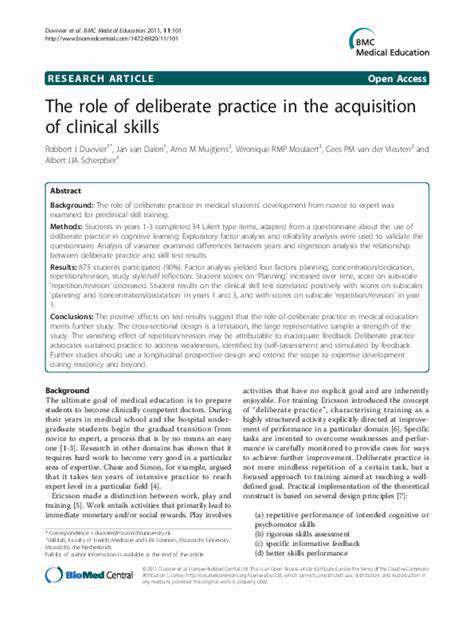
The Foundation of Skill Development
Deliberate practice is a cornerstone of skill development, encompassing more than just repetitive actions. It's a structured approach emphasizing focused effort, pushing beyond current abilities, and actively seeking feedback to identify and correct weaknesses. This process is crucial for athletes, musicians, and professionals in any field striving to improve their performance.
The key to deliberate practice lies in its intentional nature. It's not simply doing something repeatedly, but rather understanding the specific elements that need improvement and actively working on them. This involves breaking down complex tasks into smaller, manageable components and concentrating on mastering each one before progressing.
Identifying and Addressing Weaknesses
A crucial aspect of deliberate practice involves identifying areas where performance can be improved. This often involves meticulous self-assessment, seeking feedback from experienced mentors or coaches, and analyzing performance through video recordings or other data collection methods. This critical analysis is essential for pinpointing specific weaknesses and tailoring practice strategies accordingly.
By pinpointing these weaknesses, practitioners can focus their efforts more effectively. This concentrated effort will yield better results compared to general practice, which may not always address specific areas requiring improvement.
The Importance of Feedback
Constructive feedback plays a vital role in the deliberate practice process. Receiving and acting upon feedback from knowledgeable sources, such as coaches, teachers, or experienced peers, is critical for refining skills and making progress. This feedback should be specific, actionable, and focused on improving technique and strategy.
Learning to effectively utilize feedback is a critical skill that enhances the effectiveness of deliberate practice. This process fosters a deeper understanding of the skill being developed and allows for continuous improvement.
Setting Realistic Goals
Deliberate practice requires setting specific, measurable, achievable, relevant, and time-bound (SMART) goals. These goals should be challenging yet attainable, ensuring that the practice sessions are effective in driving progress without overwhelming the practitioner. A good goal will create a sense of accomplishment and motivation to continue practicing.
Overcoming Plateaus
Even with dedicated deliberate practice, individuals may encounter plateaus in their progress. These plateaus are often a natural part of the learning process. Recognizing and addressing these plateaus requires a flexible approach, potentially modifying the practice strategy, seeking new challenges, or even incorporating a temporary change of pace.
Overcoming plateaus is vital for sustained improvement. It requires adaptation and a willingness to adjust strategies and goals. This proactive approach will help prevent stagnation and maintain momentum.
The Role of Motivation and Mindset
Deliberate practice demands sustained effort and a strong commitment to improvement. Developing the right mindset, emphasizing intrinsic motivation, and maintaining a positive attitude are essential for overcoming challenges and staying motivated throughout the process. This includes recognizing the importance of setbacks and viewing them as opportunities for learning and growth.
Long-Term Benefits and Sustained Performance
The benefits of deliberate practice extend far beyond immediate performance gains. It cultivates a deeper understanding of the skill being honed, enhances problem-solving abilities, and fosters a more robust and resilient skillset. This commitment to deliberate practice will lead to sustained performance improvements and long-term mastery.
Consistent deliberate practice fosters a deeper understanding of the skill and leads to significant performance improvements. This, in turn, elevates the ability to perform tasks effectively and with precision.



